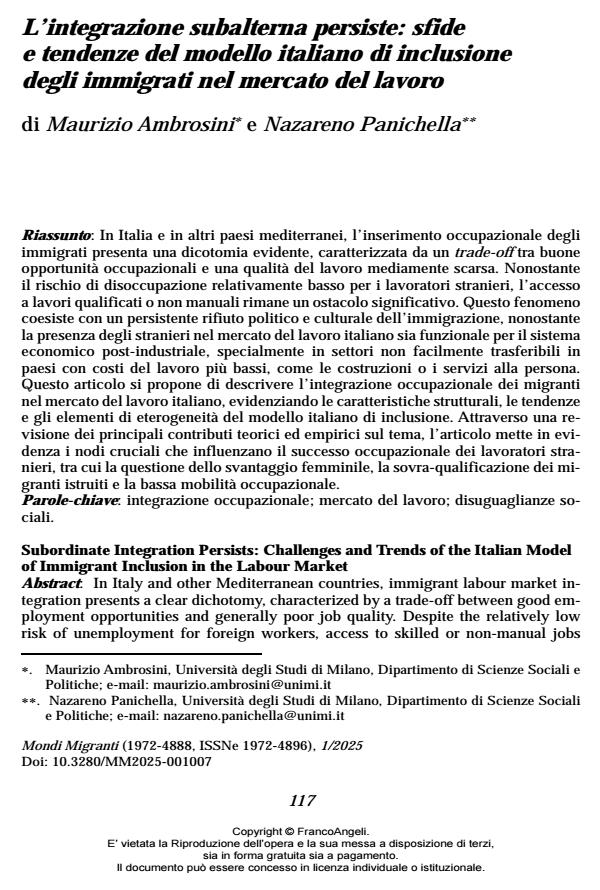Subordinate Integration Persists: Challenges and Trends of the Italian Model of Immigrant Inclusion in the Labour Market
Journal title MONDI MIGRANTI
Author/s Maurizio Ambrosini, Nazareno Panichella
Publishing Year 2025 Issue 2025/1
Language Italian Pages 26 P. 117-142 File size 147 KB
DOI 10.3280/MM2025-001007
DOI is like a bar code for intellectual property: to have more infomation
click here
Below, you can see the article first page
If you want to buy this article in PDF format, you can do it, following the instructions to buy download credits

FrancoAngeli is member of Publishers International Linking Association, Inc (PILA), a not-for-profit association which run the CrossRef service enabling links to and from online scholarly content.
In Italy and other Mediterranean countries, immigrant labour market integration presents a clear dichotomy, characterized by a trade-off between good employment opportunities and generally poor job quality. Despite the relatively low risk of unemployment for foreign workers, access to skilled or non-manual jobs remains a significant obstacle. This phenomenon coexists with a persistent political and cultural rejection of immigration, even though the presence of foreign workers in the Italian labour market is functional to the post-industrial economic system, particularly in sectors that are not easily outsourced to countries with lower labour costs, such as construction or personal services. This article aims to describe the occupational integration of migrants in the Italian labour market, highlighting the structural characteristics, trends, and heterogeneity of the Italian inclusion model. Through a review of major theoretical and empirical contributions on the topic, the article identifies key factors influencing the occupational success of foreign workers, including the issue of female disadvantage, the overqualification of educated migrants, and low occupational mobility.
Keywords: ethnic penalty; labour market; social inequality.
Maurizio Ambrosini, Nazareno Panichella, L’integrazione subalterna persiste: sfide e tendenze del modello italiano di inclusione degli immigrati nel mercato del lavoro in "MONDI MIGRANTI" 1/2025, pp 117-142, DOI: 10.3280/MM2025-001007